|
|
 Primer Primer  Anterior 2 a 2 de 2 Siguiente Anterior 2 a 2 de 2 Siguiente  Último Último  |
|
|
|
|
|
.jpg)
Preparación para lo que nos espera la Marca de la Bestia marca de recibir las PLAGAS EGIPTO LAUDATO SI CAMBIO CLIMATICO COP27 ,el sello de Cristo vivir en el mundo sin las PLAGAS pero si para vida eterna si PERSEGUIDOS por obedecer sábado séptimo día su ley del cielo del Sinaí en la mente y corazón por no obedecer el domingo catecismo ,para ser exterminados por los inquisidores Israel espiritual .
Buscad a Jehová todos los humildes de la tierra, los que pusisteis por obra su juicio; buscad justicia, buscad mansedumbre; quizás seréis guardados en el día del enojo de Jehová. Sofonías 2:3.
La transgresión casi ha llegado a su límite. La confusión llena el mundo y pronto ha de sobrecoger a los seres humanos un gran terror. El fin está muy cerca. El pueblo de Dios debiera estarse preparando para lo que ha de sobrevenir al mundo como una sorpresa abrumadora.
El “tiempo de angustia, cual nunca fue desde que hubo gente” se iniciará pronto; y para entonces necesitaremos tener una experiencia que hoy por hoy no poseemos y que muchos no pueden lograr debido a su indolencia. Sucede muchas veces que los peligros que se esperan no resultan tan grandes como uno se los había imaginado; pero éste no es el caso respecto de la crisis que nos espera. La imaginación más fecunda no alcanza a darse cuenta de la magnitud de tan dolorosa prueba. En aquel tiempo de tribulación, cada alma deberá sostenerse por sí sola ante Dios. “Si Noé, Daniel y Job estuvieren” en el país, “¡vivo yo! dice Jehová el Señor, que ni a hijo ni a hija podrán ellos librar por su justicia; tan sólo a sus propias almas librarán”. Ezequiel 14:20 (VM).
El último gran conflicto entre la verdad bibliay el error catecismo no es más que la última batalla de la controversia que se viene desarrollando desde hace tanto tiempo con respecto a la ley de Dios del cielo Sinaí . En esta batalla estamos entrando ahora; es la que se libra entre las leyes de los hombres catecismo domingo666 y los preceptos de Jehová la santa Biblia del cielo Sinaí , entre la religión de la Biblia y la religión de las fábulas y de la tradición catecismo .
Deberíamos estudiar los grandes hitos que nos señalan los tiempos en que vivimos Daniel y Apocalipsis ... Deberíamos orar fervientemente para estar listos para las luchas del gran día que Dios está preparando.
Los que se colocan bajo el control de Dios para ser guiados y dirigidos por él, captarán la marcha firme de los sucesos que él ordenó. Inspirados por el Espíritu de Aquel que dio su vida por la vida del mundo, no continuarán inactivos en la impotencia, señalando lo que no pueden hacer. Colocándose la armadura del cielo, avanzarán hacia la batalla deseosos de hacer cosas osadas en favor de Dios, sabiendo que la omnipotencia divina suplirá su necesidad.
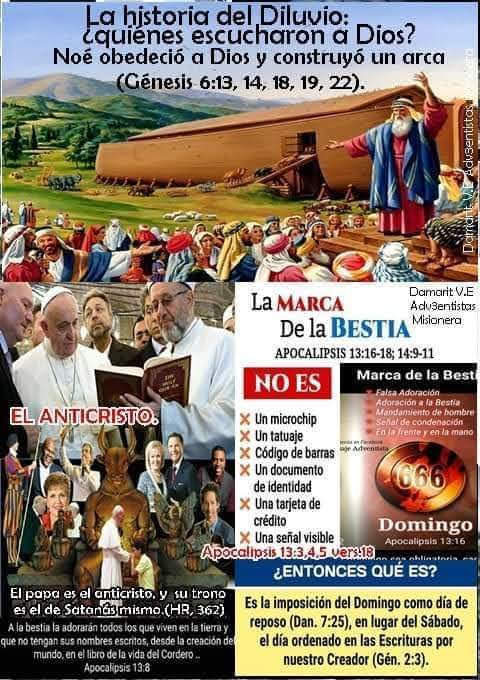 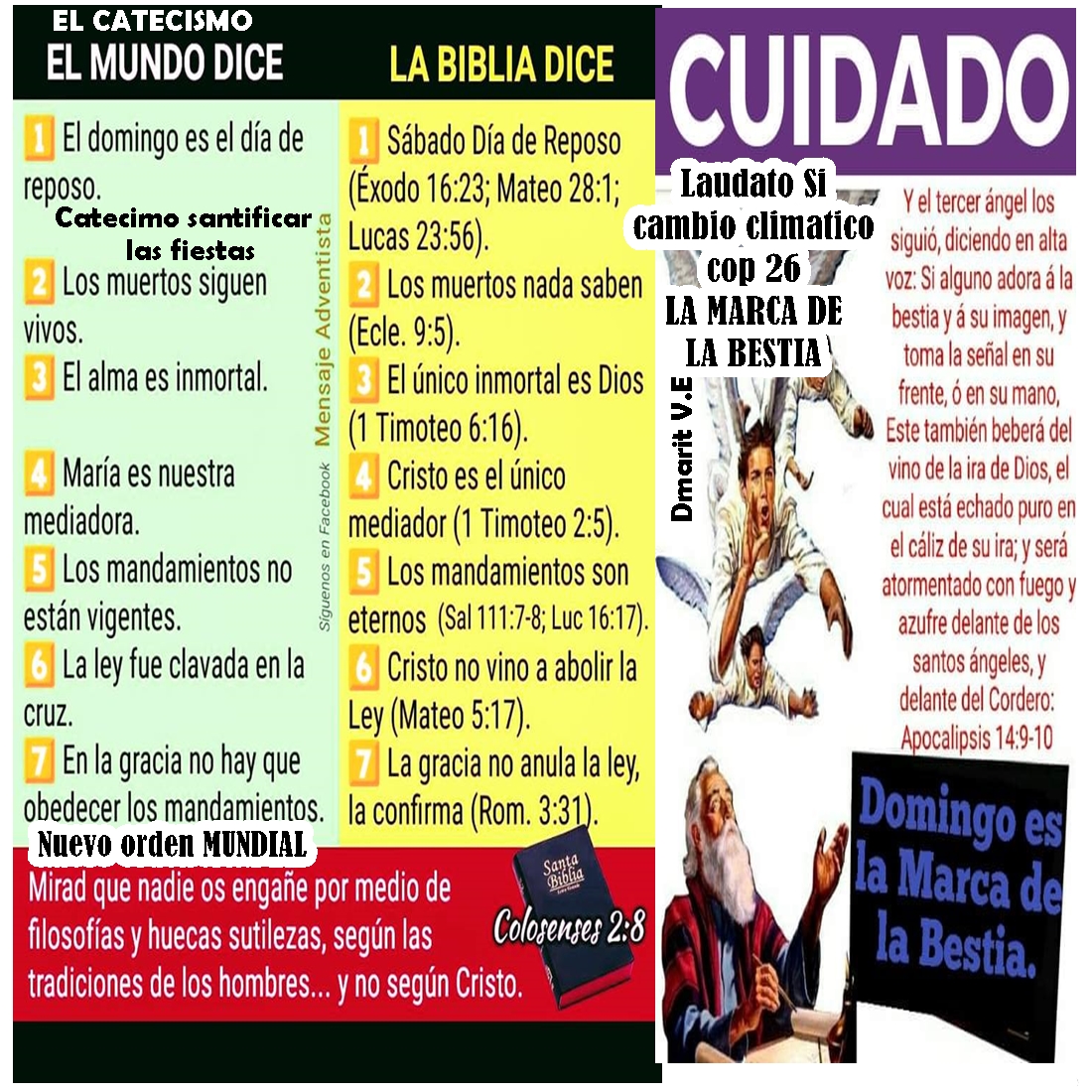 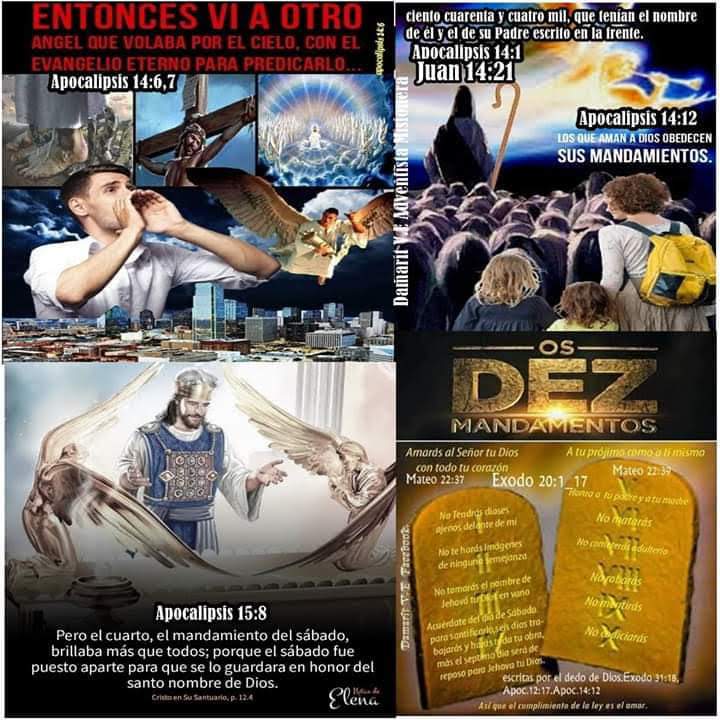 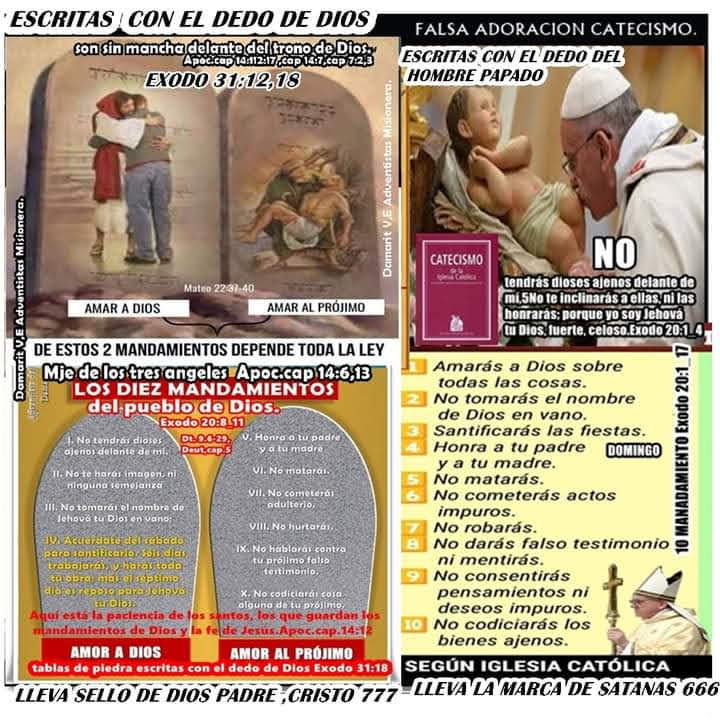
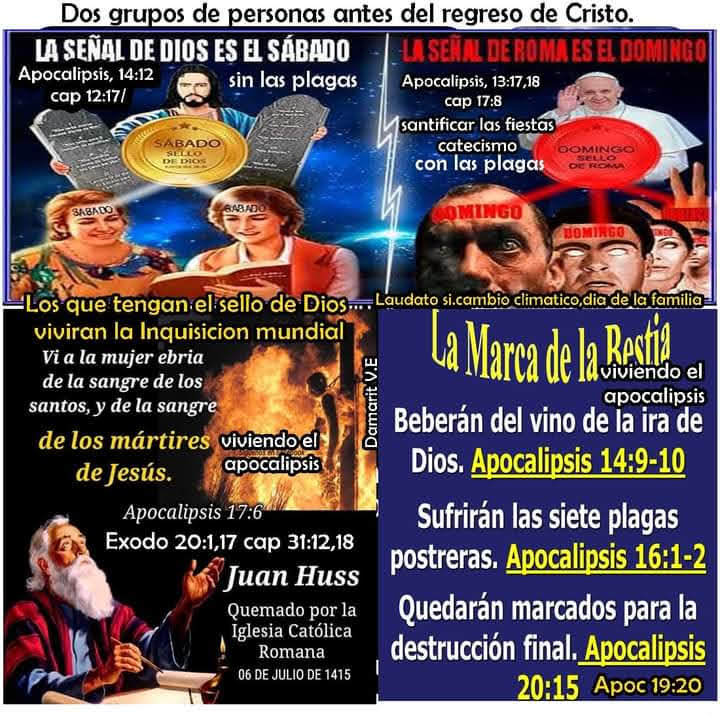  
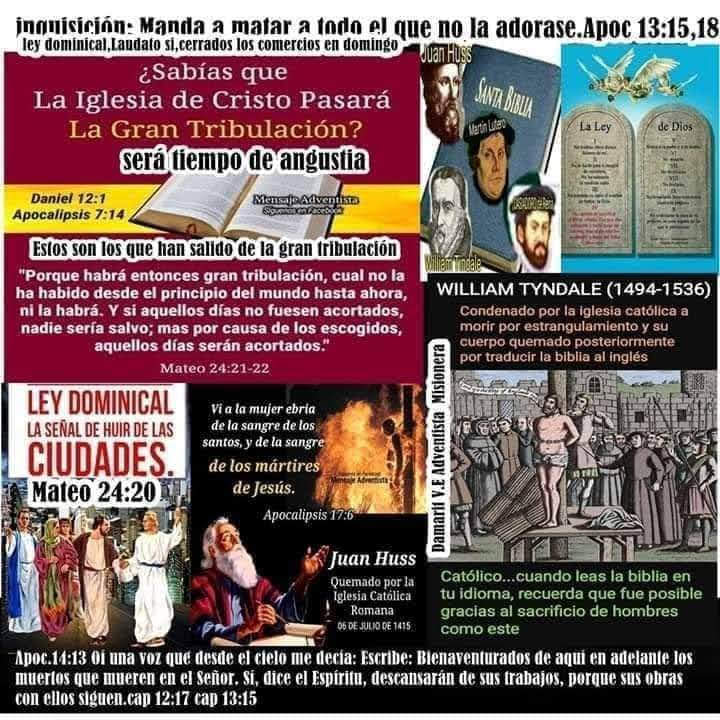
|
|
|
|
|
Shrine of the Three Kings
From Wikipedia, the free encyclopedia
The Shrine of the Three Kings[1] (German Dreikönigsschrein[2] or Der Dreikönigenschrein),[3] Tomb of the Three Kings,[4] or Tomb of the Three Magi[5] is a reliquary traditionally believed to contain the bones of the Biblical Magi, also known as the Three Kings or the Three Wise Men. The shrine is a large gilded and decorated triple sarcophagus placed above and behind the high altar of Cologne Cathedral in western Germany. Built approximately from 1180 to 1225, it is considered the high point of Mosan art and the largest reliquary in the Western world.
History[edit]

Chapel of the Magi, Cologne Cathedral, where the Shrine of the Three Kings was kept from 1322 until 1948.
The "relics of the Magi" were originally situated at Constantinople, but brought to Milan in an oxcart by Eustorgius I, the city's bishop, to whom they were entrusted by the Emperor Constantine in 314.[6] Eight centuries later in 1164, Holy Roman Emperor Frederick Barbarossa took the relics of the Magi from the church of Saint Eustorgio in Milan and gave them to the Archbishop of Cologne, Rainald of Dassel.[7] The relics have since attracted a constant stream of pilgrims to Cologne.
"In the days of Philipp of Heinsberg the shrine of the three magi was built. This was told to me by some eyewitnesses who were present when the three magi were put into the shrine." — Vita Eustorgii[8]
Parts of the shrine were designed by the famous medieval goldsmith Nicholas of Verdun,[9] who began work on it in 1180 or 1181. It has elaborate gold sculptures of the prophets and apostles, and scenes from the life of Christ. The shrine was completed circa 1225.
Around 1199, King Otto IV gave three golden crowns, purported to be made for the three wise men, as a present to the church of Cologne. Because of the importance of the shrine and the cathedral for the later development of the city, the coat of arms of Cologne still shows these three crowns symbolizing the Three Kings.
Construction of the present Cologne Cathedral begun in 1248 to house these important relics. The cathedral took 632 years to complete and is now the largest Gothic church in northern Europe.
On 20 July 1864, the shrine was opened, revealing human remains and the coins of Philip I, Archbishop of Cologne. An eyewitness report reads:
- "In a special compartment of the shrine now there showed – along with remains of ancient old rotten or moulded bandages, most likely byssus, besides pieces of aromatic resins and similar substances – numerous bones of three persons, which under the guidance of several present experts could be assembled into nearly complete bodies: the one in his early youth, the second in his early manhood, the third was rather aged. Two coins, bracteates made of silver and only one side stricken, were adjoined; one, probably from the days of Philipps von Heinsberg, displayed a church (See Note), the other showed a cross, accompanied by the sword of jurisdiction, and the crosier (bishop's crook) on either side."[10]
- Note: "Just as the coin of Philipp in Hartzheim, historia rei nummariae coloniensis Table 3 No. 14, 16, (1754),[11] yet without its circumscription; the other (coin) is in square form, showed in the center a cross, accompanied by the sword of jurisdiction, and the crosier (bishop's crook) on either side, also without transcription, most certainly it is not younger and can be assumed perhaps to turn out to be a coin by Rainald [of Dassel]."[12]
The bones were wrapped in white silk and returned to the shrine.
Description[edit]
Size and construction[edit]
The Shrine of the Three Kings is approximately 110 cm (43 in) wide, 153 cm (60 in) high, and 220 cm (87 in) long. It is shaped like a basilica: two sarcophagi stand next to each other, with the third sarcophagus resting on their roof ridges. The ends are completely covered, so there is no space visible between the sarcophagi. The basic structure is made of wood, with gold and silver overlay decorated with filigree, enamel, and over 1,000 jewels and beads. The latter include a large number of cameos and intaglio pieces, some pre-Christian.
Decoration[edit]
The entire outside of the shrine is covered with an elaborate decorative overlay. There are 74 high relief figures in silver-gilt in all, not counting smaller additional figures in the background decoration. On the sides, images of the prophets decorate the lower part, while images of the apostles and evangelists decorate the upper part. On the front end of the reliquary, there are (across the bottom, from left to right) images of the Adoration of the Magi, the Virgin Mary enthroned with the infant Jesus, and the Baptism of Christ, and above, Christ enthroned at the Last Judgment. A removable filgree panel reveals a grille displaying the names of Caspar, Melchior, and Balthasar. When the grille is removed, the skulls of the three Magi are shown wearing crowns. The other end of the reliquary shows scenes of the Passion: the scourging of Christ (lower left) and his crucifixion (lower left) with the resurrected Christ above. This end also has a bust of Rainald of Dassel in the center.
|
|
|
|
|

salt lake city=alchemy (salt)=dollar=$= LOT S WIFE (SODOMA AND GOMORRA)
Cathedral of the Madeleine
From Wikipedia, the free encyclopedia
The Cathedral of the Madeleine is a Roman Catholic church in Salt Lake City, Utah, United States. It was completed in 1909 and currently serves as the cathedral, or mother church, of the Diocese of Salt Lake City. It is the only cathedral in the U.S. under the patronage of St. Mary Magdalene.
Description[edit]
The cathedral was built under the direction of Lawrence Scanlan, the first bishop of Salt Lake City, who dedicated it to St. Mary Magdalene.[2] It was designed by architects Carl M. Neuhausen and Bernard O. Mecklenburg. The exterior is predominantly a Neo-Romanesque design, while the inside displays more Neo-Gothic details. Construction began in 1900 and was completed in 1909. It was dedicated by James Cardinal Gibbons, Archbishop of Baltimore.
It is theorized that Bishop Scanlan chose Mary Magdalene as the patron saint of the Diocese of Salt Lake because her feast day is on July 22, two days before Pioneer Day, a celebration commemorating the arrival of the Mormon pioneers in Salt Lake Valley, so that Catholics would have something to celebrate alongside the region's dominant faith.[3]
The interior of the cathedral was created under the direction of Joseph S. Glass, the second bishop of Salt Lake. Bishop Glass enlisted John Theodore Comes, one of the preeminent architects in the country, to decorate the interior of the cathedral. His plans for the interior were largely based upon the Spanish Gothic style. The colorful murals and polychrome were added at this time, as were the ornate shrines. In 1916, Bishop Glass also changed the name of the cathedral to the French spelling after visiting her purported tomb.[2]
In the 1970s, the exterior of the building was restored, and between 1991 and 1993, the interior of the cathedral was renovated and restored under Bishop William K. Weigand. This included not only the removal of dust and dirt and restoration of the interior but also changes to the liturgical elements of the cathedral to bring them into conformity with certain widespread changes in liturgical practice that developed after the Second Vatican Council.
This included constructing a new altar, moving the cathedra, creating a separate chapel for the Blessed Sacrament, and adding an ample baptismal font. The Blessed Sacrament Chapel also contains the tomb of Bishop Scanlan.[4] Resting atop the tomb is a case containing a small relic of Saint Mary Magdalene. The cathedral in Salt Lake City and the Basilica of Saint-Maximin-la-Sainte-Baume in France are the only cathedrals in the world holding first-class relics of the saint and are named in her honor.[5] The major restoration of the interior of the cathedral was accomplished through the vision of Monsignor M. Francis Mannion.[6]
The cathedral is home to the only co-educational Catholic Choir School in the United States. The Madeleine Choir School, established in 1996, now serves over 400 students in Pre-Kindergarten through Grade Eight.[7] The Cathedral Choir has recorded several CDs and routinely tours both nationally and internationally. In addition to singing daily services at the Cathedral of the Madeleine, choristers have sung at St. Peter's Basilica (Vatican City), Notre Dame de Paris (France), and in churches across the United States of America, Spain, Italy, France, Belgium, and Germany, among other places.[8]
Composer Amédée Tremblay notably served as the church's organist from 1920 to 1925.[9]
-
-
Cathedral of the Madeleine, looking east
-
Interior of the cathedral
-
   |
|
|
 Primeira Primeira
 Anterior
272 a 286 de 301
Seguinte Anterior
272 a 286 de 301
Seguinte Última
Última
|

